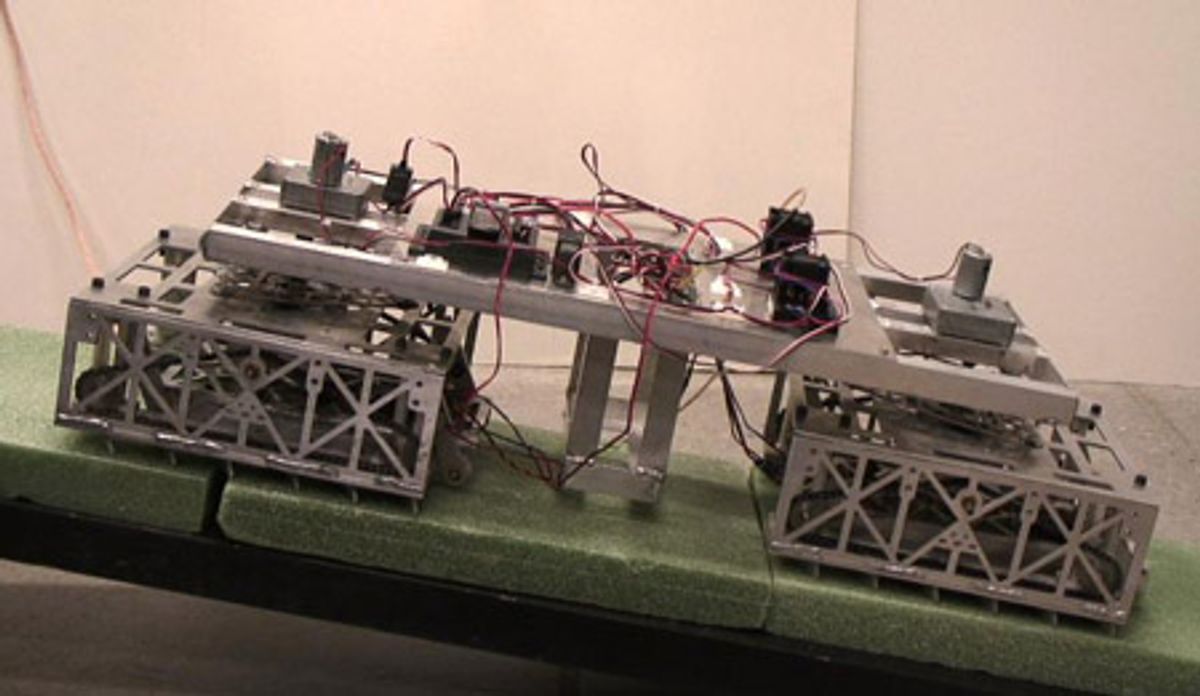On Wednesday we wrote about a robotic rescue snake that could be deployed into disaster areas by trained dogs. Georgia Tech has also been working on snake-inspired rescue robots, and they've come up with a new form of robotic locomotion based on a trick that snakes have been using for years, called rectilinear movement.
Rectilinear locomotion is when a snake moves by lifting up the scales on its belly, moving them forward, and then putting them back down on the ground again and pulling the rest of its body along, turning itself into a sort of traveling wave of muscle. Since the snake doesn't have to undulate its entire body, it's an efficient (albeit slow) form of locomotion that's especially adaptable to high-angle surfaces with varying friction, and to narrow crevices without much room to maneuver.
Hamid Marvi, a Mechanical Engineering Ph.D. candidate at Georgia Tech, has created a robot called Scalybot 2 that's able to mimic a snake's rectilinear locomotion (although it looks nothing like our scaly friends). Two separate sets of rotating motorized scales allow the robot to move, and the angle of each set of scales is independently controllable to adapt to different slopes and changes in surface properties. The advantages? Highly adaptable and very efficient movement. Watch:
Watching this video vaguely reminded me of another search and rescue robot from the Tokyo Institute of Technology called Bari-Bari-II, which you should check out here if you haven't seen it before.
It's pretty cool that we've seen robots that can emulate just about all of the different forms of locomotion exhibited by non-robotic snakes: besides the rectilinear locomotion seen here, there are lots of snakebots out there that can do lateral undulation, ones that can climb, and even a few that exhibit a sort of sidewinding. The final type of snake locomotion is called concertina movement, and it's when a snake anchors itself with one part of its body to move another part of its body ahead, and then alternates. Concertina movement is very inefficient, but it works in areas where the snake doesn't have enough room to undulate and it's substantially faster than rectilinear locomotion.
All these different types of locomotion are the reason why we see so many snake robots out there: snakes are powerful, efficient, and above all, versatile. They've had about a hundred million years to figure out how to get around, and as people with pet snakes (like myself) will tell you, we still have a lot to learn from them.
[ Georgia Tech ]
Evan Ackerman is a senior editor at IEEE Spectrum. Since 2007, he has written over 6,000 articles on robotics and technology. He has a degree in Martian geology and is excellent at playing bagpipes.




